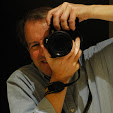Photographer Resnick on his experiences at a workshop put on by Winogrand, who pioneered street photography:
"Winogrand's photos showed an amazing lack of adherance to any rules of composition. Like the streets below, the images were filled with people in motion. There was a precarious, dynamic balance between humor and loneliness in the odd angles--an unfamiliar but powerful combination."Source: Rambling with Resnick
Most of Winogrand's best pictures - let us say all of his best pictures - involve luck of a different order than that kind of minimal, survivor's luck on which any human achievement depends. It is luck of an order that can perhaps be compared to the luck of an athlete, for whom the game is devised to make failure the rule and conspicuous success never wholly in the hands of the hero. The great Henry Aaron hit a home run 755 times in his career, but failed to do so almost 12,000 times.Source: Masters of Photography: Garry Winogrand. (Masters of Photography is a great site!)
As Winogrand grew older and his ambition grew more demanding, the role of luck in his work grew larger. As his motifs became more complex, and more unpredictable in their development, the chances of success in a given frame became smaller...
